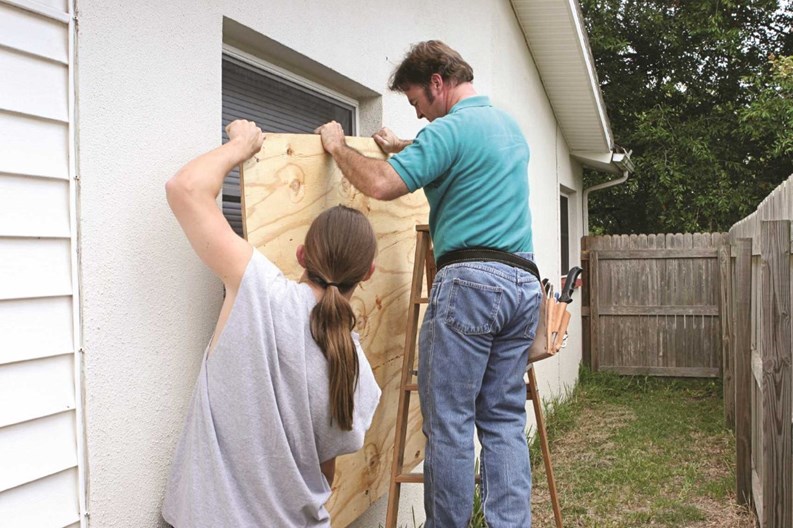People living on the Gulf Coast and further down the Eastern seaboard have long accepted hurricanes as a fact of life—one that brings with it torrential rain, howling winds and devastating hailstorms. New Jersey has been hit with a few big storms over the past two centuries—some of which caused major damage and even death—but historically, most of us haven't considered ourselves to be residents of 'hurricane country.' That nonchalance changed in 2012 with the impact of Superstorm Sandy, the second-costliest storm in U.S History (2005’s Hurricane Katrina is number one).
With billions of dollars in property damage, thousands of displaced residents, power outages affecting hundreds of thousands for days on end and loss of human life, that weather event was unlike anything most New Jersey natives had ever experienced.
“I never thought I’d see what I saw today. Ever,” New Jersey Governor Chris Christie lamented during an October 30, 2012 briefing on the storm's impact. A few of those sights included homes moved off of their foundation into the middle of Route 35, Jersey Shore amusement rides washed into the ocean, and seaside rail lines swept off the map.
With all indicators pointing to the likelihood of more and bigger storms in the coming years, it's crucial for managers, boards and residents of multifamily buildings to take steps to keep both people and property as safe as possible when the inevitable strikes. Property managers and boards must develop and implement intelligent, workable storm preparation and evacuation strategies, and residents must be aware of those strategies.
The official start of the Atlantic hurricane season is June 1st and with Accuweather.com’s long range team predicting 16 named tropical storms, eight hurricanes and four major hurricanes for the 2013 Atlantic hurricane season, with three making landfall, it’s a good idea to begin preparations now.
Preparation is Key
Property managers and boards must develop and implement intelligent, workable storm preparation and evacuation strategies, and residents must be aware of those strategies.
“The most important thing a resident in a multifamily building can do to prepare for a hurricane is to be prepared for the impact of long-term power outages,” says Mary Goepfert, an external affairs officer with the New Jersey Office of Emergency Management (NJOEM). “That’s going to pretty much cover everything else that needs to be done because if you’re not going to be impacted by the flooding, then you might be impacted by the wind. If we have wind, there’s going to be long term power outages, especially if you are on medical equipment, and things of that nature. I would say you should be cognizant of your neighbors. If you are fine, take a look around the building and see who needs help.”
“Before there is a ‘next time,’ boards and property managers should review safety policies and procedures for all types of situations with local emergency personnel. Once new procedures have been established, they should update residents on best practices, whether evacuating for a hurricane, fire or other type of emergency,” says 2013 New Jersey Association of Realtors president Christina Banasiak. “Additionally, I would suggest that they work with insurance agencies to ensure their properties have the appropriate types and levels of coverage for various catastrophic events. This is particularly important for properties located in flood zones as it is for those condos and HOAs to carefully review these maps once finalized. They should work with federal and state officials to determine the best plan of action regarding any required elevation during the provided grace period. If elevation is required, condos and HOAs should check with local, state, and federal officials to see if any aid is available to help with the expense of elevating.”
“It’s important for residents to follow your management and local government advice as to not only being prepared in the most basic manner but also for your own safety,” adds Ramon A. Cuevas, vice president of operations for Association Advisors, a management company in Freehold. “If you are advised to vacate, then vacate. Once the damage has occurred and should you lose power and you’re on the 25th floor, you’re in trouble. You and your family members should heed the advice of professionals and seek safety in a place that’s been recommended.”
Community Living
The threat of coastal flooding will only increase in the coming decades, as the Arctic ice caps continue to melt. At a recent panel on climate change in New York City, a group of professors from various area universities gathered and predicted that the sea level would rise by as much as 10 inches in the next 15 years. Fifty years from now, the ocean might be a foot, or even two feet, higher than it is today.
Any New Jersey residents not aware of the potential impact of a major storm three years ago are certainly aware of it now after what happened along the New Jersey shore and in Atlantic City in Sandy’s wake. But board members and property managers have more exigent matters to attend to than preparing for a phantom hurricane that may or may not strike. Unless your building is in one of the worst-hit areas, it’s an easy potential outcome to ignore.
So what do residents of multi-family buildings do? New Jersey state officials, property managers and residents believe condo and co-op residents should band together.
“If you are in a high-rise building, residents should designate a floor captain, someone who can be a liaison for information and supplies,” says Cuevas. The biggest problems, says Cuevas, are rumors, misinformation and assumption. If one person wants to be the liaison for getting information disseminated, he says, they should ensure that they are knocking on doors and checking on people, who may not be online or who don’t have computers to help them find out what’s going on in the building community and what is being done to help.
“What we’ve learned of multifamily buildings is that there is a diverse population in terms of age and ability,” says Goepfert. “So we urge people to get to know their neighbors, reach out to their neighbors. There are going to be individuals in multifamily dwellings that need assistance. So in this phase of situational awareness, share the information that you’re going to get from the Internet and various social media sources; not everyone is tied to the Internet. In multifamily dwellings, it’s helpful for everyone who lives there to think of that building as a community rather than each unit being a separate entity.”
Learning Lessons
On Monday, October 29, 2012 Superstorm Sandy slammed into New Jersey, resulting in about 40 deaths and a level of destruction never before experienced in this state.
“There are different emergencies that happen, a squirrel hits a transformer and takes out a building, whether it’s Superstorm Sandy or it’s something that is unnatural or man-made. The one thing I learned as a manager during Sandy is to make sure that you have relationships with the professionals,” says Cuevas. “Whether it’s being prepared prior or post, meaning having somebody who can help you to make sure the building is running smoothly. Whether it’s sandbags, checking with the professionals, checking in with the utility companies, shutting down electricity prior to the storm, checking with the elevator companies that the systems are set up to go to the proper floor designated.”
He stressed reaching out to vendors, shoring up roofing materials, and battening down the property to make sure everything is secure before, during and after a storm event.
“A storm surge is a very real thing and people should not underestimate them,” says Goepfert, “Individuals living near a coast should be very cognizant of them and not to downplay them. When it comes to preparing for this hurricane season, we are building on plans that we know worked last year. We are trying to increase knowledge among individuals who stayed behind and did not observe evacuation orders. If you don’t evacuate, you’re on your own.”
Much of emergency preparedness is about communication—where to go for news and reliable information, how to relay information to residents of the building, and so forth. While it might take another 100 years for a hurricane to wreak as much havoc as Sandy wrought, the odds are stacked in Mother Nature’s favor. Someday, everyone will need a response plan.
Greg Olear is a freelance writer and a frequent contributor to The New Jersey Cooperator.







Leave a Comment